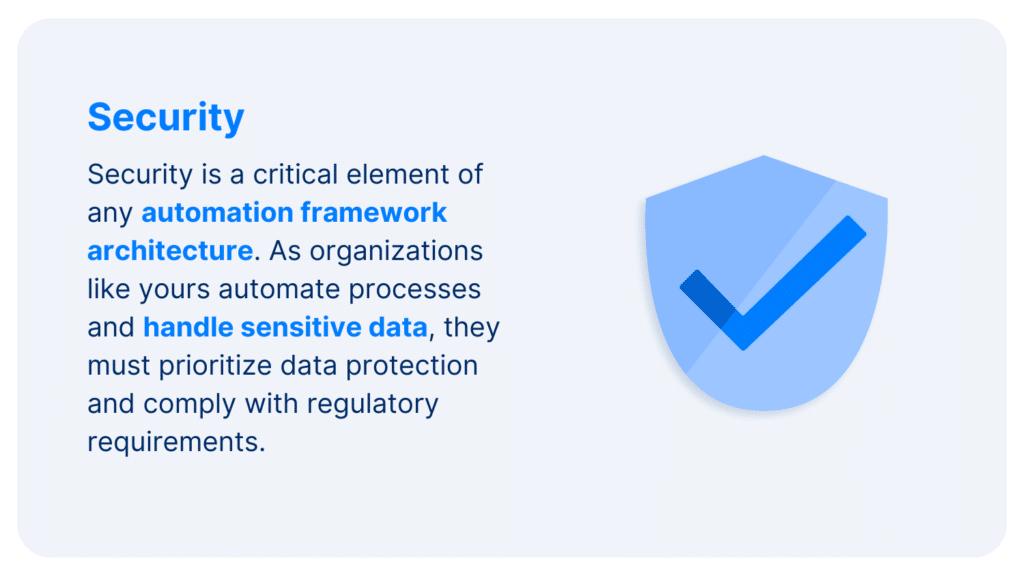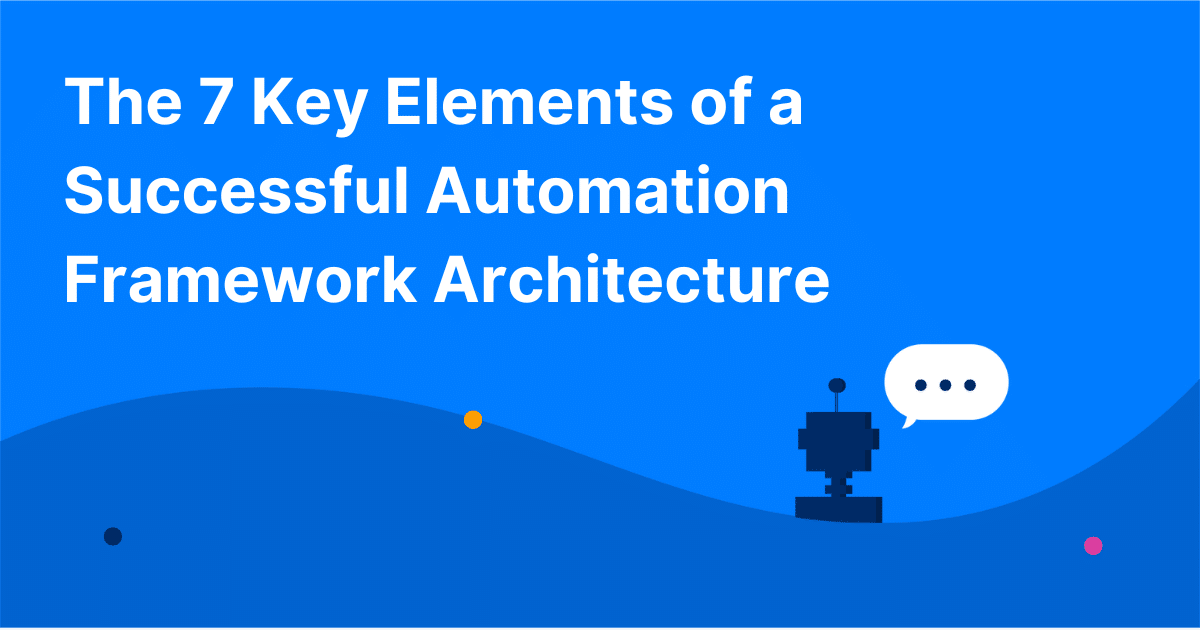Organizations are increasingly turning to automation to streamline processes, improve efficiency, and drive business growth. In fact, some 31% of businesses have fully automated at least one function. And, as much as 50% of work can be automated today, according to McKinsey. That’s why it’s time to harness the full potential of automation. So, first, you need a well-designed automation framework architecture in place.

Automate Your Work
Capacity’s enterprise AI chatbot can help:
- Answer FAQs anytime, anywhere
- Find relevant documents within seconds
- Give surveys and collect feedback
This article explores the seven key elements contributing to a successful automation framework architecture, providing IT leaders with valuable insights on building a robust foundation for their automation initiatives.
The 7 key elements of a successful automation framework architecture

1. Scalability
Firstly, scalability is a crucial element of an automation framework architecture, ensuring that the architecture can handle growing demands and increasing workloads without compromising performance or stability. Organizations can future-proof their framework by implementing scalable components and infrastructure, allowing them to handle large-scale tasks. Scalability also enables organizations to allocate resources effectively, ensuring that automation processes can scale up or down based on your business needs.
2. Flexibility
Flexibility is essential for an automation framework architecture to adapt to changing business requirements. Businesses like yours must embrace new technologies and integrate them with various systems, tools, and platforms. So, you should build an architecture that can easily integrate with these systems and technologies. This flexibility enables the framework to support multiple automation approaches, such as Robotic Process Automation (RPA), Artificial Intelligence (AI), and Machine Learning (ML). It also allows you to use emerging technologies as they become available, allowing organizations to stay at the forefront of automation advancements.
3. Modularity

Modularity is a key design principle for an effective automation framework architecture. Structuring the architecture in a modular manner, organizations can achieve component reusability and minimize duplication of effort. Modularity allows organizations to break down complex automation processes into smaller, manageable modules. In effect, this enables the independent development, maintenance, and testing of individual automation modules, improving efficiency and reducing the impact of changes or updates on the entire framework. Modularity also promotes collaboration and fosters a culture of innovation, as different teams can work on specific modules concurrently, accelerating the development and deployment of automation solutions.
4. Extensibility
An automation framework architecture should be designed with extensibility in mind. It should incorporate new functionalities and technologies as needed without requiring major rework or disruptions. With automation evolving rapidly, organizations must be adaptable and ready to embrace advancements in automation tools and techniques. You can seamlessly integrate future technologies and expand the capabilities of their automation framework. This ensures the framework remains relevant and future-proof, capable of addressing emerging business needs and leveraging innovative automation solutions.
5. Security

Security is a critical element of any automation framework architecture. As organizations like yours automate processes and handle sensitive data, they must prioritize data protection and comply with regulatory requirements. Thus, incorporating robust security measures into the automation framework architecture is crucial to safeguard sensitive information. This includes implementing secure access controls, encryption mechanisms, and auditing capabilities to mitigate risks associated with automation processes. Businesses can confidently embrace automation while safeguarding their valuable information assets and maintaining regulatory compliance by embedding security as a fundamental component of the automation framework architecture.
6. Monitoring and Reporting
Comprehensive monitoring and reporting capabilities are essential for evaluating the performance and effectiveness of automated processes. An automation framework architecture should include real-time monitoring, logging, and analytics to identify bottlenecks, errors, and areas for optimization within the framework. Monitoring and reporting give IT leaders visibility into the health and efficiency of automation processes, enabling them to make data-driven decisions for continuous improvement. These capabilities help organizations proactively identify and address issues, optimize automation workflows, and enhance the overall performance of their automation initiatives.
7. Governance and Control
Establishing clear governance and control mechanisms is vital for maintaining consistency, quality, and compliance across the automation framework. IT leaders should define guidelines, standards, and best practices for developing, deploying, and maintaining automated processes. You can ensure your business’ automation initiatives align with strategic objectives, adhere to industry regulations, and maintain a high level of quality when implementing governance and control mechanisms. This includes establishing version control practices, change management processes, and thorough documentation, enabling proper oversight, traceability, and audit-ability.

You can build a solid foundation for automation initiatives by incorporating these seven key elements into their automation framework architecture. This foundation enables organizations to unlock the full potential of automation, streamline processes, improve efficiency, and drive digital transformation. Additionally, an effective automation framework architecture sets the stage for successful implementations, empowering organizations to stay competitive in the ever-evolving digital landscape.
A well-designed automation framework architecture is crucial for organizations looking to harness the transformative power of automation. IT leaders in your position can build a robust foundation for their automation initiatives with elements of scalability, flexibility, modularity, extensibility, security, monitoring and reporting, and governance and control. With an optimized automation framework architecture in place, organizations can maximize the benefits of automation, streamline operations, enhance customer experiences, and drive innovation in the digital age. Embracing a successful automation framework architecture is the key to unlocking the full potential of automation and achieving sustainable growth.

Automate Your Work
Capacity’s enterprise AI chatbot can help:
- Answer FAQs anytime, anywhere
- Find relevant documents within seconds
- Give surveys and collect feedback





